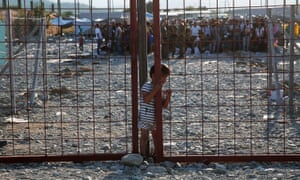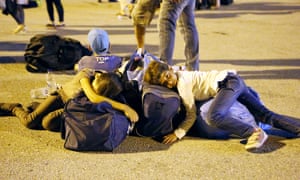The Guardian
The Syrian war has been going on for four years, but only in 2015 has Europe woken up to the flow of Syrian refugees.
So why now?
It is hard to find definitive reasons, but conversations with Syrians across the migration trail and a survey of recently available data suggest a mixture of the following.
Firstly, the war is not getting any better. That has the dual effect of prompting more Syrians to leave their country and causing Syrians in exile in Turkey to give up hope of returning home.
Secondly, Turkey is not a country for people to stay in for the long term. It has been more receptive than most, taking in about 2 million Syrian refugees. But Syrians do not have the right to work there legally, so it is not a place to settle. Additionally, the recent electoral setbacks for the AKP, the party perceived as being most in favour of helping Syrian refugees, has made many Syrians nervous about Turkey’s political future.
Thirdly, UN bodies working with millions of refugees in Jordan, Turkey and Lebanon are complaining that they are running out of money, making camp conditions harsher than in the past and life more untenable for Syrians who live on their own but still depend on UN subsidies.
The UNHCR reports that its appeals for cash are underfunded. The graphic below shows what rich countries have given to UNHCR to deal with the problem – leaving a gap of almost 40% between what it needs and what has been donated.
And these figures are just for the Syria region. In eastern Europe, a conduit for thousands of refugees seeking respite in Europe, the finances are even more damning. A UNHCR request for £14m to deal with the specific problems of conduit countries such as Italy, Hungary and Bosnia has only reached 9% of the target.
A fourth point is that people have finally saved up enough money. It is expensive to pay for your family to cross to Greece and then work your way up through Europe. Depending on how many smugglers you use, every individual might spend about $3,000 (£1,970) to get to Germany. It takes time to get that kind of cash – and maybe we are now seeing the result of several years of penny-pinching.The knock-on effect is that the UN has been unable to provide as much financial support to Syrian refugees in the Middle East during the past year, and so many have opted for Europe as a result.
Fifth, there is now a known route. People have long trekked through the Balkans to the EU, but Syrians were not previously among them. That changed late last summer, when the first few Syrians found the Balkan route to Europe. Those trailblazers told their friends, who told their friends, who set up Facebook groups about it. Suddenly a phenomenon was born – and one that grew still faster when people realised that the window might not stay open for much longer.
And sixth, the crisis is only a crisis because of the European response to it. EU countries have spent all year debating and procrastinating about an appropriate solution to Europe’s biggest refugee movement since the second world war.
80
60
40
20
0
n/a
Austria
Belgium
Bulgaria
Croatia
Cyprus
Czech Rep.
Denmark
Estonia
Finland
France
Germany
Greece
Hungary
Ireland
Italy
Latvia
Lithuania
Luxembourg
Malta
Netherlands
Poland
Portugal
Romania
Slovakia
Slovenia
Spain
Sweden
UK
Number of decisions taken in 2014, 000s
Proportion of positive decisions as % of decisions taken
The chart above shows the problem: a few countries are bearing the brunt, while at least a dozen others take in virtually no one. Any attempt to parcel out refugeesto all 28 EU countries in proportion to the size of their populations is being resisted by those where there is a deep-seated apprehension about becoming “overrun” by refugees.
Lastly, to put things in perspective: Europe may be quailing at the numbers trying to get in, but it is as nothing compared to the numbers that Syria’s neighbours have been dealing with. Here is a chart that speaks for itself:
Syrian refugees
Number of refugees, millions
*Note: for Turkey, Lebanon, Jordan, Egypt and Iraq the number is the latest count of registered Syrian refugees.
For the European countries it is the number of asylum applications by Syrians between April 2011 and July 2015
2.0
1.5
1.0
0.5
0
Turkey*
Lebanon
Jordan
Egypt
Iraq
Greece
Italy
UK
Sweden
Germany



No comments:
Post a Comment